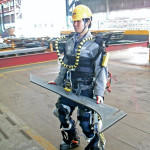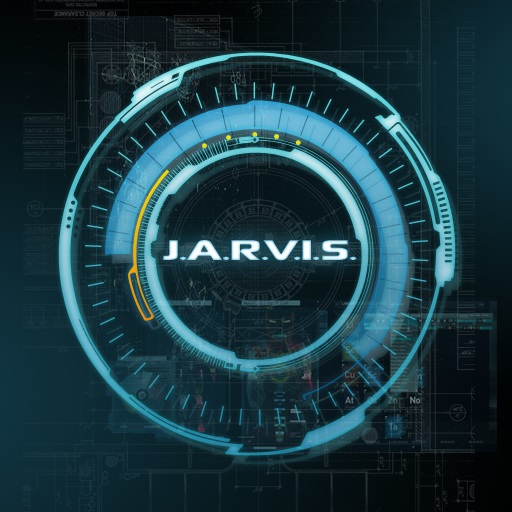There’s an Iron Man like suit that bears a resemblance to the superstructure of Tony Stark’s movie suits. Read more below:
“South Korea’s “Big Three” shipbuilders — Hyundai Heavy Industries Comp., Ltd. (KRX:009540), Daewoo Shipbuilding and Marine Engineering Comp., Ltd. (KRX:042660), and Samsung Heavy Industries Comp., Ltd. (KRX:010140)(KRX:010145) — are the world’s top three shipbuilders, respectively.
I. South Korea’s Shipbuilding “Big Three” Dominate Large Freighter Contracts
The trio is locked not only in fierce competition with each other, but with Chinese and Japanese shipbuilders. Currently, China’s shipbuilding industry cumulatively commands the biggest global market share, but it’s been unable to crack the top three — spots owned solely by South Korea’s elite.
Key to South Korea’s dominance of shipbuilding revenue has been its unparalleled mastery of building super-large oceanic freight ships. In a Jan. 2014 interview with The Wall Street Journal, Hyundai Heavy Industries — the world’s largest shipbuilder by revenue — commented:
Super large containerships are gaining popularity among shipping companies.
Daewoo S&M Eng. (DSME), the second largest shipbuilder, is hoping to bump Hyundai to third with the help of a lucrative contract with top Dutch shipper A.P. Møller–Mærsk A/S (OMX:MAERSK A)(OMX:MAERSK B).
Worth $1.9B USD, the contract is a massive moneymaking opportunity for Daewoo S&M Eng., but also represents literally gargantuan engineering challenges.
II. A Gargantuan Challenge
The South Korean shipbuilder has been tasked with producing 400 meters (1,312 ft.) long and 59 meters (194 ft.) wide oceanic freighters that are the current record holders for the biggest cargo ships in the world. The vessels will be dubbed EEE-Class (“Triple E”) and will carry up to 18,340 twenty-foot shipping containers (TEU). The ships will weigh 55,000 tons unloaded and are capable of carrying 165,000 tons of cargo, crew, ballast, fuel, and provisions (dead weight tonnage).
Driven by 32-megawatt (43,000 hp) ultra-long stroke two-stroke diesel engines they will cruise at a relatively slow, but deliberate speed of 19 knots (35 km/h; 22 mph) which will allow them to cut fuel consumption by 37 percent.
Daewoo S&M Eng. is building the massive craft primarily at its shipyard in Okpo-dong, located on Geoje Island off South Korea’s southeast coast. The company has a video discussing some of the facility’s cutting edge innovations, which allow construction of such massive vessels.
After producing the first ten EEE-class vessels, as promised, Daewoo S&M Eng. is currently in the process of delivering its second set of ten vessels (for another $1.9B USD). In an effort to reduce costs, it’s testing out an exoskeleton designed in-house for use at its shipyard in Okpo-dong, South Korea which will help its employees lift and carry very heavy loads without risking injury or requiring less agile traditional heavy lifters.
Daewoo, Samsung, and Hyundai’s shipbuilding wings are already setting a standard for the use of bleeding edge robotics in manufacturing. According to a U.S. Navy study they rely on robots for over two thirds of the welding, as well as much of the cutting, grinding steel, and polishing. But keeping the robotic assembly components fed with material requires a lot of heavy lifting and transfer of large metal components.
III. A Helping Hand
That’s where the Daewoo S&M Eng. is having the RoboShipbuilder step in. Currently the exosuit is being used by employees and can lift up to 30 kg (66.1 lb.). That’s enough to lift a variety of smaller steel components, and precisely position them for the most difficult welding tasks.
The suit uses a mixture of hydraulics and electric servomotors to carry the load. Workers start by standing on footpads and then strap the exoskeleton legs frame to their legs, followed by a backpack-like section and arm frame. The exoskeleton accommodates workers of heights between 1.6 and 1.85 meters (5’3″ to 6’1″).
The exoskeleton is made of a complex mix of carbon fiber, aluminum alloys, and steel alloys. It weighs 28 kg (61.7 lb.) and is capable of 3 hours of operation via lithium-ion batteries that accompany the control circuitry in the backpack of the suit. The suit is capable of walking at a “normal” human pace while carrying the 30 kg objects.
Lead engineer Gilwhoan Chu of Daewoo S&M Eng.’s research and development wing is spearheading the project. His team has produced several prototypes that have reportedly received positive reviews from the shipyard workers at the Okpo-dong docks. He told New Scientist in an interview that the only complaints were that employees wanted to move faster and be able to lift heavier weights.
To that end he’s working on a new set of prototype RoboShipbuilder suits that will be capable of 100 kilograms (220.5 lb). That’s roughly the weight of a standard 2-meter steel support beam. He said the project leverages more than a decade of robotics expertise of his team at Daewoo S&M Eng., experience which has helped his firm win contracts for giant freighters and become the world’s second largest shipbuilder.
IV. A New Paradigm?
One interesting feature of the RoboShipbuilder suit is its use of plugins/extensions, which modify its motion. One example Mr. Chu gives is a crane-type extension capable of holding components in place high above the user’s head after the basic lift.
Both its South Korean rivals and U.S. manufacturers such as the Boeing Comp. (BA) are likely keenly following Daewoo’s progress with the exosuit, as will the U.S. military which has issued contracts to build and test similar suits for purposes such as carrying heavy crates of ammo short distances on the battlefield.
One prototype by Raytheon Comp. (RTN) dubbed the “SARCOS Suit” is capable of lifting at least 91 kg (200 lb). But in some ways Daewoo’s design is more advanced as the SARCOS suit in its last demonstrated form only had a sixth the battery life (half an hour of juice), moved somewhat slower, and was less extensible than the RoboShipbuilder. The SARCOS suit also weighs more than twice as much — 57 kg (125 lb).
Currently Boeing is funding a robotics limbs project of its own — the Massachusetts Institute of Technology’s (MIT) Supernumerary Robotic Limbs (SRLs) project. The SRL project is led by Professor H. Harry Asada, the principle investigator of MIT’s d’Arbeloff Lab. It differs slightly from Daewoo’s RoboShipbuilder and most other exosuits in that it gives the worker a second set of limbs.
Boeing last month revealed details of its plans to use robots to build much of the fuselage of the Boeing 777-8X/9X, an under-development design which will be the longest, largest, and most fuel-efficient passenger planes in the world, according to Boeing. In a comment to reporters Boeing described:
[The craft] will be built using automated, guided robots that will fasten the panels of the fuselage together, drilling and filling the more than approximately 60,000 fasteners that are today installed by hand.
[The robotic build system] will be implemented first on today’s 777 [and after validation on that craft] is expected to be baseline to 777X fuselage production.
An exosuit like Daewoo S&M Eng.’s would be the perfect complement to such a system, filling in with agile superhuman lifting in cases where the robotic system needs assistance or restocking of heavy material components.”
Source: DailyTech





